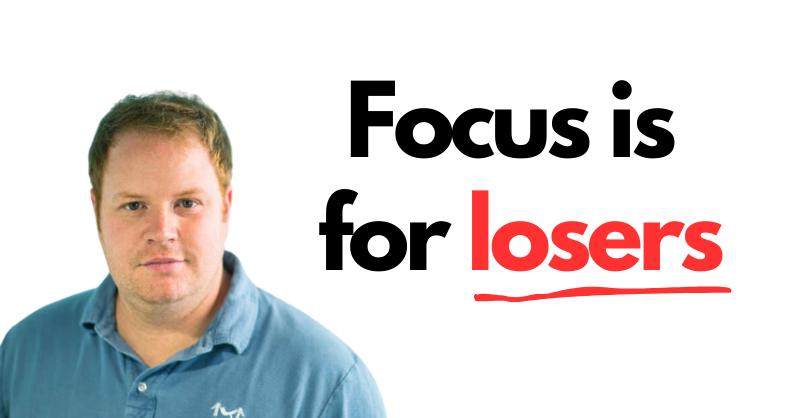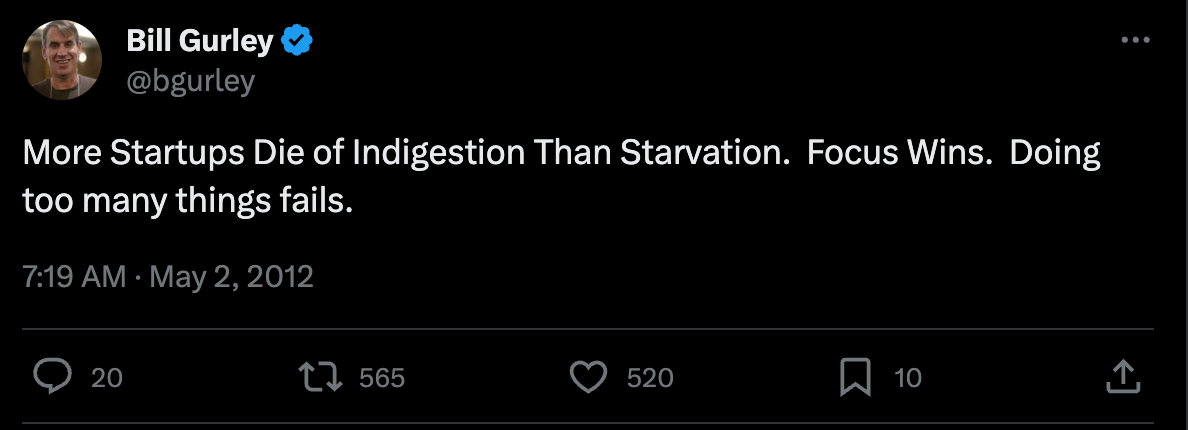Some startups just dream bigger

Conventional startup wisdom tells us to focus, focus, focus. Success, we’re told, comes to those who find a narrow niche, dominate it and then expand from there.

Parker Conrad believes this is all wrong. Maybe it was good advice 10 years ago but now everyone is doing it and it's no longer the optimal strategy.
Parker might not be super famous outside of Silicon Valley yet, but he will be. He’s founded two unicorns and is currently the CEO of Rippling, an HR SaaS company valued at $11b.
So, what’s Parker’s problem with focused startups?
- The deepest business problems span multiple point-solution business systems so customers are forced to cobble together solutions.
- Many ideas for point-solution SaaS products have been picked over and are incredibly competitive.
- It’s difficult for a focused startup to build their second or third successful product because the entire company is set up to build and support a single product.
Parker proposed an alternative approach, which he calls a compound startup. Building a compound startup is about tackling multiple related problems in parallel with strong integration and interoperability.
| Focused Startup | Compound Startup | |
|---|---|---|
| Builds one product | Builds multiple products | |
| Builds a tool | Solves a coordination problem across systems | |
| Maximizes revenue for a single SKU | Maximizes revenue on a bundle of SKUs | |
| Adds to a client's systems complexity | Consolidates business systems to reduce complexity |
Said more succinctly:
Advantages of a compound startup
There are four main advantages to building a compound startup:
- Integration: Each product is deeply integrated with the underlying primitive (eg. employee data) and other products.
- Shared components: Middleware components that are much more powerful than any of the standalone competitors. e.g. reports, workflows, approval chains. The cost to develop these components are amortized across multiple products, so you can invest much deeper.
- Common UX patterns: Users are familiar with the UI and middleware components, so learning each new product is super fast. E.g. If you know how to build a report or set up a workflow in one product you have superpowers for all other products.
- Bundled pricing: Pricing and contracting advantages because you can amortize your sales and marketing costs across a bunch of different SKUs. Your CAC:LTV ratio can become insane once you’re up and running.
The pricing advantages are critical to understand because that’s the magic that makes it all work. Compound startups focus on maximizing the price of the bundle, rather than individual SKUs because they're selling so many products. As a result, they're able to undercut competitors on any individual product.
“Stack it deep, sell it cheap, stack it high and watch it fly!” - Wal-Mart employee chant
Think about Microsoft bundling Windows, Office, Azure, Teams etc. Products in those bundles often dominate not because they’re better but due to Microsoft's pricing advantage. Case in point: Teams now has more users than Slack!
The architecture of compound startups
“As the adage goes, you ship your org chart. It’s chaos here right now, so we’re shipping chaos.” - Twitter employee
Compound startups create products differently and consequently need to be structured differently as well. The two main org design requirements are:
- Organize the company for parallel execution on multiple products. This means you need to split out multiple business units instead of building a functional structure. Organising the business in this way requires you to have incredibly strong leaders for each product because each product is essentially a startup. Rippling has hired dozens of former founders into these roles - not an easy task.
- Create shared technical and GTM infrastructure. On the technical side, this probably includes things like reports, analytics, workflow automations, and permissions.
The foundation of a compound company is the underlying primitive it’s built on top of. For Rippling, the atomic unit is the employee record. For Salesforce, it's the customer record.
It's crucial to build products on top of the primitive because that's what makes the multiplicative benefits of the middleware layer possible.
When it comes to the products themselves, things get a bit counter-intuitive. Compound startups are well suited for building products in competitive, commoditized spaces. This is because the product specs are typically known upfront, and differentiation is hard for competitors. In those situations, a compound startup's product stands out because they are inherently differentiated not by featured but by being a cohesive part of the product suite.
So how do you go about building a compound startup?
With compound startups, the integration is the product - so look for an area with significant complexity due to customers relying on multiple systems.
Be warned, though. It’s really fucking hard to build a startup this way. But if you have the ambition, pain-tolerance and can survive the initial challenge, then an iconic company awaits.
Further reading: